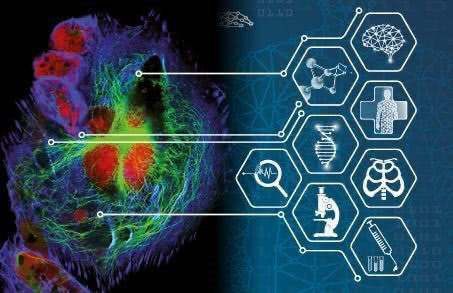3D Cell Culture Conference
From May 5 to May 7, 2021, the online conference 3D Cell Culture (3DCC) 2021: Models, Applications & Translation took place around the latest scientific findings and current model innovations in the fields of synthetic biology, tumor research, 3D models and microphysiological systems. We were there!
The focus of the conference was on improving drug safety, modeling numerous diseases, and integrating personalized medicine through microphysiological platforms. Since these are exactly our topics, our managing director Martin Raasch and doctoral student Tim Kaden participated in the scientific dialogue with two lectures and an ePoster on liver-on-a-chip and alveolus-on-a-chip models.
In the session “Innovative Microphysiological Systems” Martin Raasch presented the establishment of the Dynamic42 Alveolus-on-a-Chip model and its use for infection studies. Because of the current SARS-CoV-2 pandemic, the data on influenza virus A, Staphylococcus aureus, Aspergillus fumigatus and the first studies on SARS-CoV-2 viruses generated great interest from the audience.
In the same session Tim Kaden presented the results of his master’s thesis on drug-induced liver damage by paracetamol, trovafloxacin and levofloxacin in the liver model.
During the conference, the urgency of making drug development safer was mentioned, to save costs and time and to uncover toxicity even before preclinical studies in humans. In a lively exchange with numerous conference exhibitors from renowned research institutes, biotechnology, and pharmaceutical companies as well as the drug authorities, we found new inspiration for our work on assay developments and modifications of chip systems.
In summary, the 3DCC was a very appealing stage for the presentation and discussion of our scientific results. Furthermore, it gave us insights into the fascinating projects of other research groups and companies. Despite the current pandemic situation, attending the virtual conference was very profitable for us and will certainly participate again next year.
Picture: DECHEMA
More interesting articles:
Blog
Organ-on-chip applications by organ type – what has been done?
This blog lists examples of organ-on-chip models by organ type that have been used in the past, providing the respective literature for your reference.
Read MoreBlog
Exploring infectious disease dynamics through organ-on-chip technology
This blog explores established infection models using our organ-on-chip technology and their implications for scientific research.
Read MoreBlog
Immunocompetent Organ Models – the Future of Biomedical Research
One crucial factor that plays a pivotal role in the success of organ-on-cip models is immunocompetence. In this blog post, we delve into the significance of immunocompetence in organ-on-chip models and how it opens new avenues for advancing medical research.
Read More

